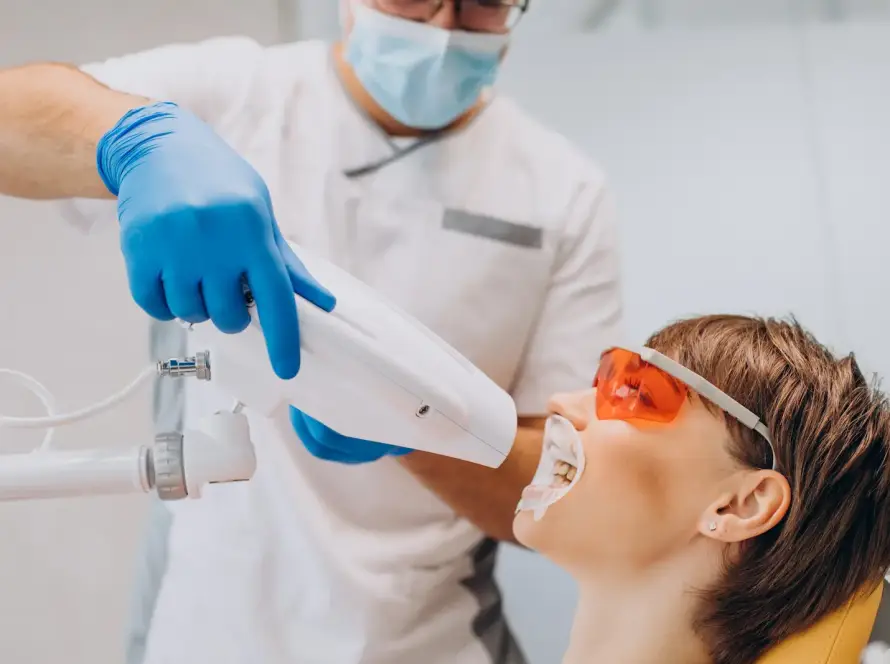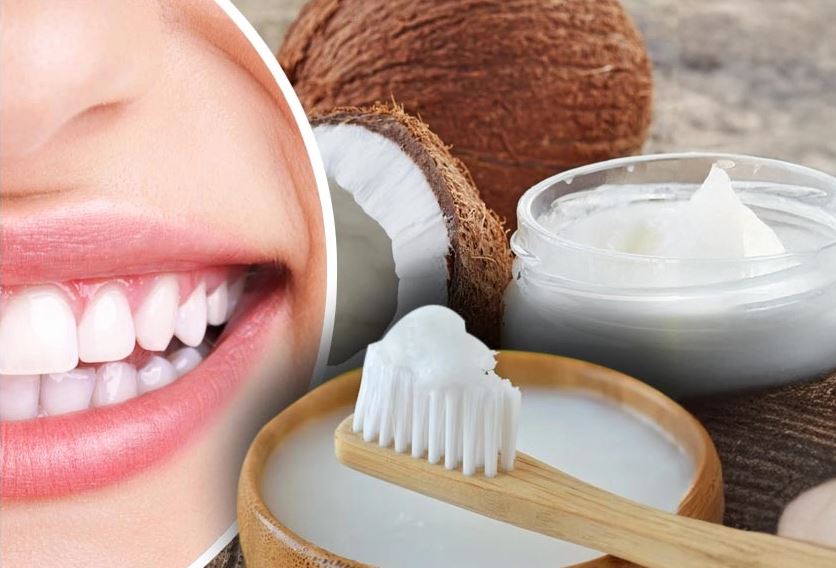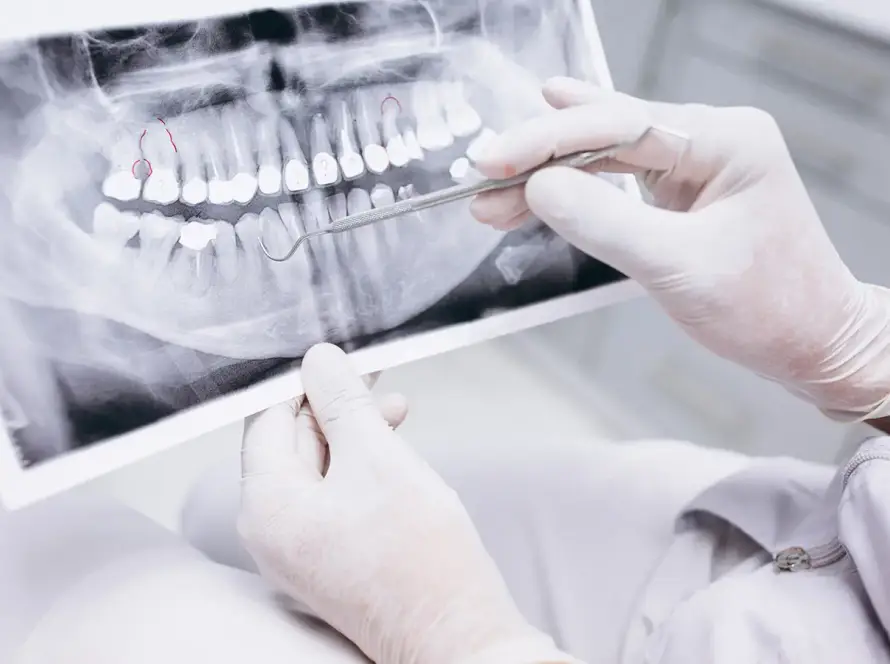Mouthwash, also known as oral rinse, is a liquid product used to rinse the mouth. This dental hygiene aid typically contains antiseptic substances designed to kill bacteria in the mouth. It provides various benefits, including fresher breath, reduced plaque, and prevention of gum disease. Understanding the importance of mouthwash involves delving into its composition, types, and uses.
Components of Mouthwash
Mouthwash primarily consists of:
- Antimicrobial Agents: Ingredients like cetylpyridinium chloride and chlorhexidine that help eliminate bacteria.
- Fluoride: Strengthens tooth enamel and prevents decay.
- Alcohol: Acts as a carrier for essential oils and provides an antiseptic effect.
- Essential Oils: Such as thymol, eucalyptol, and menthol, which help reduce bacteria and refresh breath.
- Astringents: Such as zinc chloride, which tightens tissues and reduces odors.
- Flavoring Agents: Mask the taste of active ingredients and provide a pleasant mouthfeel.
Types of Mouthwash
There are several types of mouthwash designed for specific purposes:
- Cosmetic Mouthwash:
- Temporarily controls bad breath and leaves a pleasant taste but does not address underlying causes.
- Therapeutic Mouthwash:
- Contains active ingredients to target specific dental issues like gingivitis, plaque, and tooth decay.
- Often recommended by dentists for patients with particular dental health concerns.
Uses and Applications
Mouthwash can be used for:
- Daily Oral Hygiene: Complementary to brushing and flossing, it provides an additional layer of cleanliness.
- Breath Freshening: Offers an immediate solution to bad breath with its antibacterial properties.
- Reducing Oral Bacteria: Helps decrease the overall bacteria load in the mouth, which can prevent infections and gum disease.
- Post-Surgical Care: Often prescribed after dental procedures to promote healing and prevent infections.
Understanding the components and benefits of mouthwash helps individuals make informed choices about incorporating it into their daily oral hygiene routines. It is an effective tool for maintaining oral health and preventing dental issues.
The History of Mouthwash: From Ancient Remedies to Modern Solutions
Mouthwash’s journey spans centuries, reflecting the evolution of human understanding of oral hygiene. Early records indicate that ancient civilizations recognized the importance of mouth cleanliness and devised several methods to maintain it.
Ancient Egypt
In ancient Egypt, individuals combined water with various compounds such as:
- Salt: Utilized for its cleansing properties.
- Peppermint oil: Added for its freshening effect.
- Vinegar: Known for its antibacterial properties.
These mixtures were rudimentary yet effective for maintaining oral health and combating bad breath.
Ancient Rome and Greece
In ancient Rome and Greece, individuals employed different substances in their mouthwash preparations:
- Urine: Utilized due to its ammonia content, which acted as an antiseptic.
- Wine and Myrrh: Combined to create mouth rinses that also served a ceremonial purpose.
These solutions showcased early attempts at both hygiene and ritualistic uses.
Traditional Chinese Medicine
During early Chinese civilizations, traditional medicine emphasized using natural ingredients to create mouth-cleaning solutions:
- Green tea: Used for its antibacterial and anti-inflammatory properties.
- Saffron and clove: Selected for their aromatic and antimicrobial benefits.
The holistic approach marked an essential aspect of Chinese oral health practices.
Medieval Europe
During the medieval period, mouthwash practices saw the incorporation of a broader range of ingredients:
- Herbal blends: Included ingredients like mint, rosemary, and sage.
- Alcohol-based concoctions: Leveraged the preservative and microbial properties of alcohol.
Medieval Europeans began to focus more on combating halitosis, with compositions aimed at minimal medicinal and more aesthetic benefits.
The 18th and 19th Centuries
The 18th century introduced a significant change with the use of scientific methods to improve oral hygiene. Noteworthy developments included:
- The introduction of antiseptics: By the late 19th century, scientists identified bacteria as a cause of oral diseases, leading to the formulation of more effective mouth rinses.
- Creation of commercial mouthwash: Products like Listerine, introduced in 1879, emerged with scientific backing, promising better oral care.
Modern Day
Modern mouthwash is a testament to advanced scientific research and improved healthcare standards. Contemporary formulations focus on:
- Fluoride inclusion: To strengthen teeth and prevent decay.
- Antimicrobial agents: For killing bacteria and reducing plaque.
- Aesthetic enhancements: Such as whitening agents and breath fresheners.
The evolution of mouthwash from ancient remedies to high-tech solutions underlines the continual quest for better oral hygiene and health.
Types of Mouthwash: Choosing the Right One for Your Needs
Selecting the appropriate mouthwash depends on various factors, including individual oral health conditions, preferences, and specific dental needs. Here are the main types of mouthwash available:
1. Therapeutic Mouthwashes
Therapeutic mouthwashes are designed to treat oral health issues such as bad breath, gingivitis, plaque, and cavities. These are usually available over-the-counter and may contain active ingredients like fluoride, essential oils, and antimicrobial agents.
- Antiseptic Mouthwash: Contains ingredients like chlorhexidine or alcohol to kill bacteria and reduce plaque. Ideal for those with gum disease or following oral surgery.
- Fluoride Mouthwash: Helps to strengthen tooth enamel and prevent cavities. Suitable for individuals prone to tooth decay.
2. Cosmetic Mouthwashes
Cosmetic mouthwashes primarily focus on temporarily controlling bad breath and providing a pleasant flavor. They do not contain active ingredients that directly fight dental issues.
- Whitening Mouthwash: Contains mild bleaching agents to help whiten teeth over time. Good for those seeking cosmetic improvements.
- Breath-Freshening Mouthwash: Focuses on masking odors and offering a fresh taste. Ideal for daily use to maintain fresh breath.
3. Natural or Organic Mouthwashes
These mouthwashes use natural ingredients, free from synthetic chemicals, alcohol, and artificial preservatives. They often include essential oils and herbal extracts known for their antibacterial and anti-inflammatory properties.
- Herbal Mouthwash: Includes ingredients like tea tree oil, aloe vera, or echinacea. It is a good choice for those preferring organic products.
- Oil Pulling Solutions: Uses oils such as coconut or sesame for traditional remedies to remove toxins and improve oral health.
4. Specialty Mouthwashes
These are formulated for specific conditions or demographics and can include prescription options.
- Prescription Mouthwash: Typically contains higher concentrations of active ingredients like chlorhexidine. Prescribed for severe gum disease or post-surgical care.
- Children’s Mouthwash: Formulated with lower fluoride concentrations and safe flavors suitable for young children. Recommended for kids who need additional dental hygiene support.
Factors to Consider
When choosing a mouthwash:
- Oral Health Needs: Evaluate current dental issues or conditions.
- Active Ingredients: Consider the effectiveness and necessity of specific compounds.
- Sensitivity: For those with sensitive teeth or gums, alcohol-free alternatives might be essential.
- Taste and Preference: Given daily use, choose a flavor and consistency appealing enough to encourage regular use.
Choosing the right mouthwash involves considering both the therapeutic benefits and personal preferences to ensure optimal oral health.
Key Ingredients in Mouthwash: What to Look For and What to Avoid
Selecting a mouthwash involves understanding the key ingredients that contribute to its efficacy. Recognizing which components to seek out and which to avoid can help ensure the product meets individual oral care needs.
Ingredients to Look For
- Fluoride: Essential for strengthening enamel and fighting cavities. Mouthwash with fluoride can assist in preventing tooth decay.
- Cetylpyridinium Chloride (CPC): A quaternary ammonium compound effective in reducing plaque and killing bacteria that cause bad breath.
- Essential Oils: Ingredients like thymol, eucalyptol, and menthol can help control plaque, gingivitis, and bad breath.
- Chlorhexidine: Often prescribed for treating gingivitis, this antiseptic ingredient is highly effective against plaque and bacteria.
- Hydrogen Peroxide: Useful for whitening teeth and fighting oral bacteria, though it is typically used in lower concentrations.
- Xylitol: A natural sweetener that doesn’t contribute to tooth decay and helps reduce bacteria in the mouth.
- Zinc Compounds: Used to neutralize sulfur compounds that cause bad breath, providing long-lasting freshness.
Ingredients to Avoid
- Alcohol (Ethanol): Often included as a disinfectant, it can dry out the mouth, leading to an environment conducive to bacteria growth and causing irritation.
- Saccharin: An artificial sweetener linked to potential health risks. It is better to choose mouthwashes without artificial sweeteners.
- Sodium Lauryl Sulfate (SLS): A surfactant that can cause irritation and canker sores in some individuals.
- Parabens: These preservatives are associated with various health concerns and are better avoided in oral care products.
- Artificial Dyes: Color additives that may lead to staining of the teeth or allergic reactions in sensitive individuals.
- Chlorhexidine overuse: While effective, overuse can lead to staining and altered taste. It should only be used as directed by a dental professional.
- Triclosan: An antibacterial agent known to cause antibiotic resistance and hormonal imbalances; it is generally advisable to avoid.
Emphasize Thorough Evaluation
Evaluating the ingredient list of a mouthwash is crucial for making an informed choice that effectively maintains oral health, without adverse effects.
Health Benefits of Using Mouthwash: Beyond Fresh Breath
Mouthwash offers a range of health benefits that extend far beyond simply freshening breath. Adopting a regular mouthwash routine can substantially enhance oral hygiene and contribute to overall well-being.
Gingivitis Prevention
- Gingivitis, an inflammation of the gums, can be effectively managed with the use of antimicrobial mouthwash.
- Ingredients such as chlorhexidine and essential oils help reduce bacterial growth and plaque buildup.
- Regular use diminishes symptoms like redness, swelling, and bleeding.
Cavity Protection
- Fluoride-based mouthwashes can play a critical role in the prevention of cavities.
- Fluoride strengthens tooth enamel, making it more resistant to acid attacks from food particles and bacteria.
- This protective barrier significantly reduces the risk of tooth decay.
Plaque Reduction
- Mouthwashes containing active antibacterial agents help in combating plaque formation.
- Reducing plaque can prevent tartar buildup, thereby lowering the chances of developing periodontal (gum) diseases.
- Consistent use helps maintain a cleaner, healthier mouth environment.
Alleviation of Oral Pain
- Many specialized mouthwashes contain ingredients designed to alleviate oral pain.
- These products often include anesthetics or anti-inflammatory agents.
- Such formulations are beneficial for those suffering from conditions like canker sores or other minor oral injuries.
Post-Surgical Benefits
- Mouthwash usage is particularly beneficial post oral surgeries and dental procedures.
- It aids in maintaining oral hygiene during recovery, minimizing the risk of infection.
- Antiseptic properties help hasten the healing process and reduce discomfort.
Prevention of Bad Breath
- While the primary benefit known to many is the prevention of bad breath, the mechanisms behind this are medically significant.
- Formulations with active antimicrobial agents eliminate the bacteria responsible for producing foul odors.
- This ensures a long-lasting fresh breath effect, contributing to social and psychological well-being.
Whitening Effects
- Some mouthwashes are formulated with agents like hydrogen peroxide to offer teeth whitening benefits.
- These products can help remove surface stains, providing a brighter, more aesthetically pleasing smile.
- Over time, consistent use can lead to noticeable improvements in teeth color without undergoing extensive dental procedures.
In conclusion, the health benefits of using mouthwash are extensive and multi-faceted. By integrating it into daily oral care routines, individuals can achieve a significantly higher standard of oral and general health.
How to Use Mouthwash Correctly: A Step-by-Step Guide
Using mouthwash correctly can optimize its benefits for oral hygiene. Follow these simple steps:
Step 1: Choose the Right Mouthwash
Ensure the mouthwash addresses specific needs:
- Antibacterial: Targets plaque and gingivitis.
- Fluoride: Prevents cavities and strengthens enamel.
- Cosmetic: Freshens breath but offers minimal therapeutic benefits.
Step 2: Read the Instructions
Always read the manufacturer’s guidelines on the label. Instructions can vary depending on the type and brand.
Step 3: Measure the Correct Amount
- Use the cap provided to measure the recommended amount, usually around 20 milliliters (4 teaspoons).
Step 4: Pour the Mouthwash into Your Mouth
- Ensure the liquid is evenly distributed in your mouth.
Step 5: Swish Thoroughly
- Keep your lips closed and swish the liquid around your mouth.
- Focus on ensuring the mouthwash reaches all areas, including the back teeth and gums.
- Swish vigorously for the time recommended on the label, typically between 30 seconds to 1 minute.
Step 6: Gargle if Directed
Some mouthwashes include instructions to gargle to help reduce bacteria in the throat. Tilt your head back slightly without swallowing the liquid and gargle for a few seconds.
Step 7: Spit Out the Mouthwash
- Do not swallow the mouthwash.
- Spit it out completely into the sink to avoid ingesting any potentially harmful ingredients.
Step 8: Avoid Eating or Drinking
- Wait at least 30 minutes before consuming food or beverages to allow the active ingredients to work effectively.
Step 9: Use Regularly
- Incorporate mouthwash into your daily oral hygiene routine, typically twice a day, unless otherwise directed by a healthcare provider.
Pro Tips:
- If you experience any irritation or allergic reaction, discontinue use and consult a dental professional.
- Avoid using mouthwash immediately after brushing to prevent diluting the fluoride in toothpaste.
Following these steps can ensure proper use of mouthwash, enhancing the effectiveness of your oral hygiene regimen.
Myths and Facts About Mouthwash: Debunking Common Misconceptions
1. Mouthwash Is a Substitute for Brushing and Flossing
Myth: Mouthwash can replace brushing and flossing.
Fact: Mouthwash complements but does not replace brushing and flossing. It helps reduce bacteria and freshens breath, but it cannot remove plaque and food particles like brushing and flossing.
2. All Mouthwashes Are the Same
Myth: Every mouthwash formula is identical.
Fact: Mouthwashes vary significantly in ingredients and purposes. Some are antiseptic, combating bacteria and germs, while others are fluoride-based, strengthening enamel and preventing decay. Labels should be read to identify specific benefits.
3. Alcohol-Based Mouthwashes Are Dangerous
Myth: Alcohol in mouthwash is harmful and causes health issues.
Fact: Alcohol is a common ingredient in many mouthwashes, aiding in the eradication of bacteria. There are, however, alcohol-free options for those with sensitivities or conditions aggravated by alcohol.
4. Mouthwash Cures Bad Breath Permanently
Myth: Using mouthwash guarantees lasting fresh breath.
Fact: Mouthwash provides a temporary solution to bad breath. Persistent halitosis could be a sign of underlying health issues that need professional evaluation, such as gum disease or systemic conditions.
5. It Is Only for Adults
Myth: Children should not use mouthwash.
Fact: Specially formulated mouthwashes for children, often alcohol-free and containing fluoride, can be beneficial. Guidance by a dentist or pediatrician is advised to select an appropriate product and usage.
6. More Mouthwash Means Better Results
Myth: Using more mouthwash enhances dental health.
Fact: Excessive use, especially of alcohol-based products, can lead to dry mouth and irritation. The recommended usage is as per the product’s instructions, typically twice daily.
7. You Should Rinse with Water After Using Mouthwash
Myth: It is necessary to rinse with water post-mouthwash.
Fact: Immediate rinsing dilutes the mouthwash’s effects, reducing its efficacy. The recommended practice is to avoid rinsing with water to allow maximal contact of mouthwash with oral surfaces.
8. Mouthwash Stains Teeth
Myth: All mouthwashes stain teeth.
Fact: Some mouthwashes, particularly those containing chlorhexidine, can cause temporary staining. Consulting a dental professional can identify products less likely to cause discoloration.
9. Mouthwash Is Unnecessary with Good Oral Hygiene
Myth: Good brushing negates the need for mouthwash.
Fact: Mouthwash can provide benefits beyond brushing, such as reaching areas where a toothbrush cannot, reducing bacteria, and providing additional fluoride.
10. Mouthwash Use Encourages a False Sense of Security
Myth: Reliance on mouthwash leads to neglecting brushing and flossing.
Fact: When used as part of a comprehensive routine, mouthwash enhances oral hygiene. Education on its appropriate role prevents misconception and misuse.
DIY Mouthwash: Homemade Solutions and Recipes
Creating homemade mouthwash solutions can be a cost-effective and customizable way to maintain oral hygiene. The following are some simple recipes and solutions that one can prepare at home using readily available ingredients.
Basic Saltwater Rinse
A saltwater rinse is an effective and natural method to cleanse the mouth, reduce bacteria, and soothe sores.
Ingredients:
- 1 teaspoon of salt
- 1 cup of warm water
Instructions:
- Dissolve 1 teaspoon of salt in a cup of warm water.
- Stir until the salt is completely dissolved.
- Swish the solution in the mouth for 30 seconds.
- Spit out the solution. Do not swallow.
Baking Soda Mouthwash
Baking soda mouthwash helps neutralize acids and freshen breath.
Ingredients:
- 1 teaspoon of baking soda
- 1 cup of warm water
Instructions:
- Mix 1 teaspoon of baking soda in a cup of warm water.
- Stir until the baking soda is fully dissolved.
- Swish the solution around the mouth for 30 seconds.
- Spit out the solution. Avoid swallowing.
Essential Oil Mouthwash
Essential oils offer antimicrobial properties and can enhance flavor.
Ingredients:
- 1 cup of distilled water
- 1 teaspoon of baking soda
- 5 drops of tea tree oil
- 5 drops of peppermint oil
Instructions:
- In a clean bottle, combine distilled water with baking soda.
- Add tea tree oil and peppermint oil.
- Shake well before each use.
- Swish 1-2 tablespoons of the mixture in the mouth for 30 seconds.
- Spit out the solution. Do not swallow.
Hydrogen Peroxide Mouthwash
Hydrogen peroxide is known for its whitening and antimicrobial benefits.
Ingredients:
- 1 part 3% hydrogen peroxide
- 1 part water
Instructions:
- Mix equal parts of 3% hydrogen peroxide and water.
- Swish the mixture in the mouth for 30 seconds.
- Spit out the solution. Do not swallow.
It is advisable to consult with a dental professional before using any homemade mouthwash, especially if there are pre-existing dental conditions.
Clinical Studies on Mouthwash: What the Science Says
Scientific research has provided insights into the efficacy and safety of mouthwash products. Numerous studies have focused on different types of mouthwash, their active ingredients, and their effects on oral health.
Antiseptic Mouthwash
Antiseptic mouthwashes often contain alcohol-based agents or other antimicrobial compounds like chlorhexidine.
- Chlorhexidine: According to clinical studies, chlorhexidine mouthwash significantly reduces dental plaque and gingivitis. It is often used in post-surgical care to prevent infection.
- Alcohol-based: Studies have shown that alcohol-based mouthwashes can effectively reduce oral bacteria. However, long-term use has been associated with an increased risk of oral mucosal lesions and dry mouth.
Fluoride Mouthwash
Fluoride mouthwash has been extensively studied for its role in preventing dental caries (tooth decay).
- Clinical Trials: Research indicates that daily use of fluoride mouthwash can reduce the incidence of cavities, particularly in children and adolescents.
- Efficacy: One meta-analysis demonstrated a 26% reduction in caries rates among regular users compared to non-users.
Cosmetic Mouthwash
Cosmetic mouthwashes primarily aim to control bad breath and provide a pleasant taste.
- Short-term Effects: Studies show that these mouthwashes are effective in reducing malodor for several hours.
- Active Ingredients: Common ingredients such as essential oils and sodium chlorate are found effective in neutralizing volatile sulfur compounds responsible for bad breath.
Natural Ingredient Mouthwash
Natural and herbal mouthwashes have gained popularity as an alternative to chemical-based products.
- Research Findings: Clinical trials have examined the efficacy of mouthwashes containing tea tree oil, neem, and aloe vera.
- Outcomes: Results generally indicate that these natural products can reduce plaque and gingivitis, though they may be less effective than chlorhexidine.
Special Populations
Certain groups, such as pregnant women and patients undergoing chemotherapy, require specific considerations.
- Pregnant Women: Studies have shown that mouthwashes reduce the prevalence of gingivitis without adverse effects on pregnancy outcomes.
- Cancer Patients: Mouthwashes containing benzydamine or chlorhexidine can help manage oral mucositis in patients undergoing cancer treatment.
Recent Innovations
Cutting-edge research focuses on the development of new mouthwash formulations targeting specific bacteria.
- Targeted Therapy: Recent clinical studies suggest that mouthwashes incorporating specific antibodies or peptides can offer more precise microbial control.
These varied clinical studies on mouthwash provide a comprehensive understanding of their benefits and limitations, guiding users in selecting the most appropriate product for their oral health needs.
Potential Risks and Side Effects of Mouthwash: What You Should Know
When evaluating the use of mouthwash, it’s essential to consider potential risks and side effects. While mouthwash can offer benefits like fresher breath and reduced bacteria, there can be downsides.
Common Side Effects
- Dry Mouth: Some mouthwashes contain alcohol, which can contribute to decreased saliva production, resulting in a dry mouth sensation.
- Taste Alterations: Certain ingredients may temporarily alter the sense of taste, leading to a metallic or bitter aftertaste.
- Burning Sensation: Alcohol-based mouthwashes often cause a burning sensation, which can be uncomfortable for some users.
Long-Term Risks
- Oral Cancer Concerns: Studies have suggested a potential link between long-term use of alcohol-based mouthwashes and an increased risk of oral cancer. However, this connection remains a topic of ongoing research and debate.
- Vengeance of Oral Flora: Extended use of antibacterial mouthwash can disrupt the natural balance of bacteria in the mouth, potentially leading to an overgrowth of harmful bacteria once discontinued.
- Gingival Sensitivity: Some individuals may experience increased sensitivity of the gums due to the chemical components in certain mouthwashes.
Specific Ingredient Risks
- Chlorhexidine: Long-term use can lead to teeth staining and altered taste perception.
- Essential Oils: While natural, they can cause allergic reactions in sensitive individuals.
- Cetylpyridinium Chloride (CPC): Though effective against bacteria, CPC can lead to staining and a temporary loss of taste.
Special Considerations
- Children: Mouthwash containing high levels of fluoride or alcohol is generally not recommended for children under six, as accidental ingestion can occur.
- Pregnancy: Pregnant women should consult healthcare professionals before using mouthwash, especially those containing alcohol or other potent ingredients.
By understanding these potential risks and side effects, individuals can make informed decisions and choose the most suitable mouthwash product for their needs while minimizing any adverse effects.
Mouthwash for Specific Dental Conditions: Targeted Solutions
Mouthwashes are not just for general oral hygiene; they can be tailored to address specific dental conditions. Here, several types of therapeutic mouthwashes are highlighted:
Gingivitis and Periodontal Disease
For addressing gingivitis and periodontal disease, antiseptic mouthwashes containing chlorhexidine are often prescribed. These mouthwashes work by reducing bacterial load and preventing plaque formation.
- Chlorhexidine Mouthwash: Often recommended by dentists for short-term use.
- Essential Oils: Mouthwashes with ingredients such as thymol and eucalyptol can also provide benefits.
Dry Mouth (Xerostomia)
Some mouthwashes are specifically formulated to combat dry mouth. They typically contain ingredients that help to moisturize and lubricate oral tissues.
- Biotene Mouthwash: Contains enzymes and proteins that mimic saliva’s natural properties.
- Glycerin-based Mouthwashes: Offers lubrication to reduce dryness.
Tooth Sensitivity
For individuals suffering from tooth sensitivity, desensitizing mouthwashes can provide relief by occluding exposed dentin tubules and reducing nerve excitability.
- Potassium Nitrate Mouthwash: Common ingredient known for its desensitizing effect.
- Arginine and Calcium Carbonate: Helps in blocking the exposed tubules.
Bad Breath (Halitosis)
Specialized mouthwashes for bad breath often include ingredients that target sulfur compounds, which are primarily responsible for malodorous breath.
- Zinc-based Mouthwash: Effective in neutralizing sulfur compounds.
- Chlorine Dioxide Mouthwash: Breaks down volatile sulfur compounds.
Oral Thrush
Mouthwashes containing antifungal agents can treat oral thrush, a condition caused by the overgrowth of Candida species.
- Nystatin Oral Suspension: Requires prescription and targets fungal infections.
- Chlorhexidine Gluconate: Can also be effective in reducing fungal load.
Canker Sores
To soothe and promote healing of canker sores, mouthwashes with specific soothing agents are often recommended.
- Hydrogen Peroxide-based Rinses: Provides antiseptic benefits and alleviates irritation.
- Benzydamine Hydrochloride: Offers both antiseptic and anti-inflammatory effects.
Orthodontic Braces
People with braces may benefit from mouthwashes that contain ingredients aimed at maintaining cleanliness around brackets and wires, reducing the risk of plaque buildup and gingivitis.
- Fluoride Mouthwash: Aids in strengthening enamel and preventing decay.
- Antimicrobial Mouthwash: Helps reduce bacterial colonization on orthodontic appliances.
Conclusion
The targeted application of mouthwash can provide substantial benefits for specific dental conditions. It’s essential to consult healthcare professionals to choose the appropriate formulation for individual needs.
Mouthwash Recommendations for Different Age Groups
Children (Ages 6-12)
For children aged 6 to 12, it is important to use alcohol-free mouthwash formulas. These should contain fluoride to help prevent cavities and strengthen enamel. Recommendations include:
- TheraBreath for Kids: Alcohol-free, promotes healthy gums and fresh breath.
- ACT Kids Anticavity Fluoride Rinse: Strengthens teeth, fights cavities.
- Listerine Smart Rinse: Fluoride-rich, provides long-lasting cavity prevention.
Teenagers (Ages 13-18)
Teenagers can use a variety of mouthwashes depending on their specific needs, such as bad breath, braces, or gum health. Consider:
- Crest Pro-Health: Offers a comprehensive approach, including anti-cavity, anti-gingivitis, and plaque control benefits.
- Listerine Cool Mint: Known for its robust antiseptic properties, great for reducing plaque and gingivitis.
- ACT Total Care: Alcohol-free, provides fluoride protection and strengthens enamel.
Adults (Ages 19-60)
Adults have a wide array of choices tailored to diverse needs like gum health, bad breath, and whitening. Recommended brands include:
- TheraBreath Fresh Breath: Alcohol-free, excellent for combating bad breath.
- CloSYS Ultra Sensitive: Ideal for individuals with sensitive teeth and gums; also alcohol-free.
- Crest 3D White: Proven to help with teeth whitening and stain prevention.
- Listerine Total Care: Comprehensive care including cavity prevention, enamel strengthening, and fresh breath.
Older Adults (Ages 60+)
Older adults require mouthwashes that cater to age-related oral health issues such as dry mouth, gum disease, and tooth sensitivity. Recommended products include:
- Biotène Dry Mouth Oral Rinse: Specifically designed for dry mouth relief.
- Parodontax Clean Mint Daily Mouthwash: Helps with gum health and fights plaque.
- Colgate Peroxyl Antiseptic Mouthwash: Effective for preventing oral infections and soothing minor irritations.
Special Considerations
- Orthodontic Patients (All Ages): For those wearing braces, GUM Ortho Antibacterial Mouthwash offers targeted protection and ease of use.
- Pregnant Women: Should opt for alcohol-free and fluoride-containing options like ACT Alcohol-Free Anticavity Fluoride Rinse.
- People with Diabetes: Mouthwashes like SmartMouth Dry Mouth can assist with dry mouth, a common issue among diabetics.
Pediatric Guidelines
According to pediatric recommendations, mouthwash should only be introduced to children over the age of 6 unless advised otherwise by a pediatrician or dentist. Supervision by an adult is crucial to ensure proper use and prevent swallowing of the mouthwash.
Oral Hygiene Tips: Complementing Mouthwash with a Complete Routine
Maintaining optimal oral hygiene involves more than just using mouthwash. A complete routine ensures the prevention of oral health issues and promotes a radiant smile.
- Brushing
Brush teeth at least twice a day with fluoride toothpaste. Use a toothbrush with soft bristles to avoid damaging the gums and enamel. Replace the toothbrush every three months or sooner if the bristles become frayed. - Flossing
Floss daily to remove plaque and food particles between teeth, where a toothbrush cannot reach. Proper flossing techniques reduce the risk of gum disease and cavities. For individuals with tight spaces between teeth, dental picks or water flossers may be used as alternatives. - Diet
Limiting sugary and acidic food and drinks helps maintain enamel strength and prevent tooth decay. A diet rich in fruits, vegetables, lean proteins, and whole grains supports overall oral health. Drinking water regularly keeps the mouth hydrated and aids in washing away food particles. - Regular Dental Check-ups
Scheduling biannual dental appointments allows for professional cleaning and early detection of potential issues. Dentists can offer personalized advice and preventive care tailored to a patient’s unique needs. - Proper Use of Mouthwash
Adhering to the instructions on the mouthwash bottle is crucial. Most mouthwashes are designed to be used once or twice daily. Swishing the solution thoroughly for the recommended time maximizes its benefits. Avoid eating or drinking immediately after use to ensure the mouthwash’s effectiveness is not diminished. - Tongue Cleaning
Cleaning the tongue can help reduce bad breath and remove bacteria that the toothbrush may not reach. This can be accomplished with a tongue scraper or by brushing the tongue gently with a toothbrush.
By integrating these habits, individuals can enhance the effectiveness of mouthwash and enjoy a comprehensive approach to oral hygiene. These steps work harmoniously to maintain healthier teeth and gums.
Conclusion: Incorporating Mouthwash into Daily Oral Care
Mouthwash, when used adjunctively with brushing and flossing, can significantly enhance oral hygiene routines. Understanding the correct usage and selecting the appropriate product are critical for maximizing benefits.
Benefits of Including Mouthwash:
- Comprehensive Cleaning: Mouthwash can reach areas that toothbrushes and floss cannot, ensuring a more thorough cleanse.
- Enhancement of Fluoride Intake: Fluoride-containing mouthwashes can bolster dental health by strengthening enamel and preventing cavities.
- Germ Elimination: Antimicrobial mouthwashes help eliminate bacteria that cause plaque, gingivitis, and bad breath.
Types of Mouthwash:
- Antiseptic or Antibacterial: Effective against bacteria that cause gingivitis and bad breath.
- Fluoride: Aims to protect teeth against cavities by strengthening tooth enamel.
- Cosmetic: Primarily freshens breath and does not offer significant health benefits beyond this.
- Natural: Utilizes natural ingredients like essential oils and is preferred by those avoiding synthetic chemicals.
Usage Guidelines:
- Timing: Mouthwash should ideally be used after brushing and flossing to clear away residual food particles and bacteria.
- Measurement: Typically, 20 milliliters of mouthwash is sufficient for a single use. Follow the manufacturer’s label.
- Duration: Swish the mouthwash in the mouth for 30 seconds to 1 minute to ensure efficacy.
- Frequency: Depending on the type, mouthwash can be used once or twice a day. Excessive use, particularly of alcohol-based ones, should be avoided to prevent dry mouth.
Safety Considerations:
- Avoid Swallowing: Mouthwash is for topical use only and should not be ingested.
- Alcohol Content: Some mouthwashes contain alcohol, which may not be suitable for everyone, including children and individuals with alcohol sensitivities.
- Consult a Professional: Always seek advice from a dentist before adding a new oral care product to one’s routine, especially if there are existing dental or systemic health issues.
By selecting the right mouthwash and adhering to proper usage guidelines, individuals can significantly improve their oral hygiene. Incorporating mouthwash into daily oral care routines not only helps maintain fresh breath but also supports the overall health of the teeth and gums.















